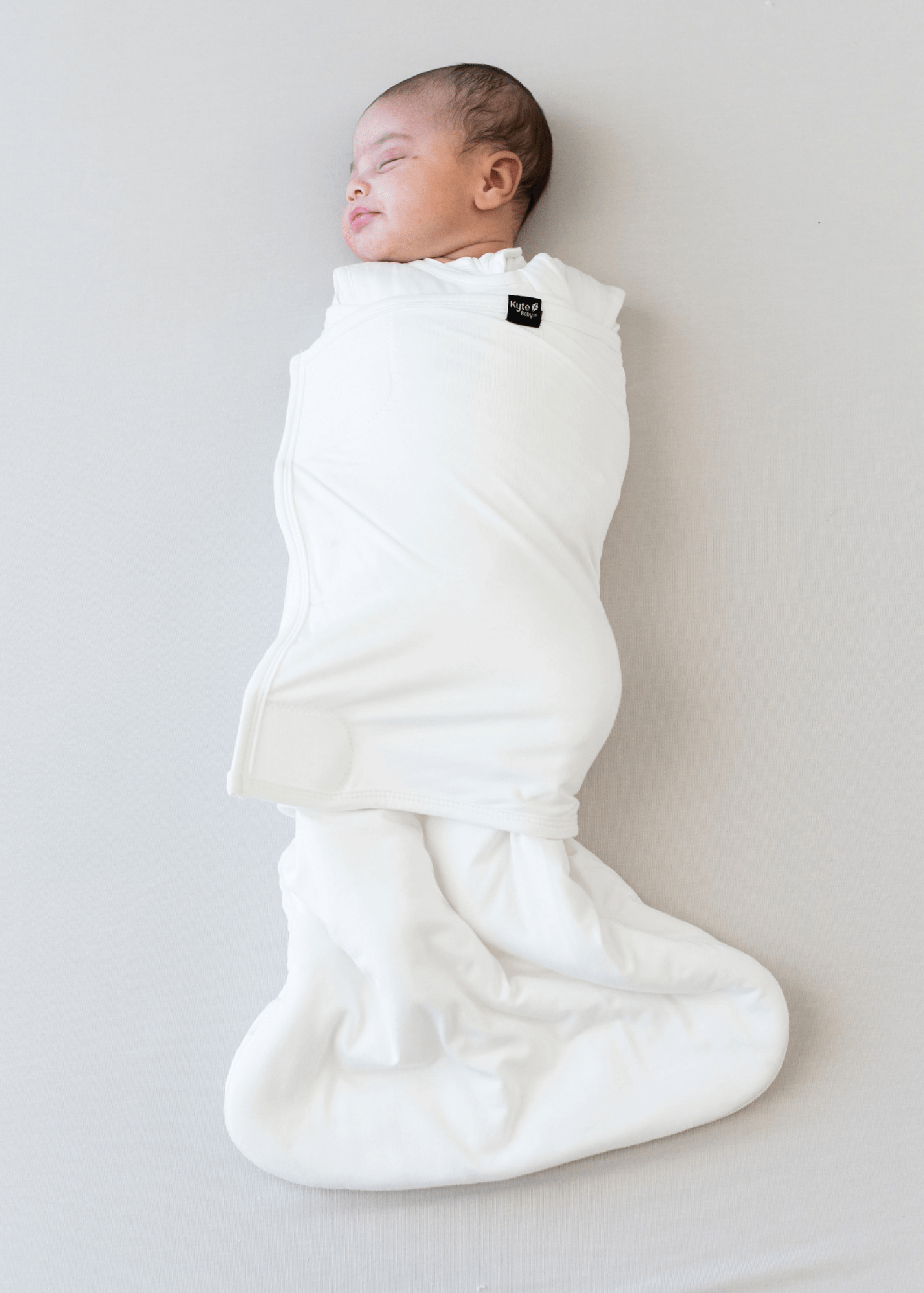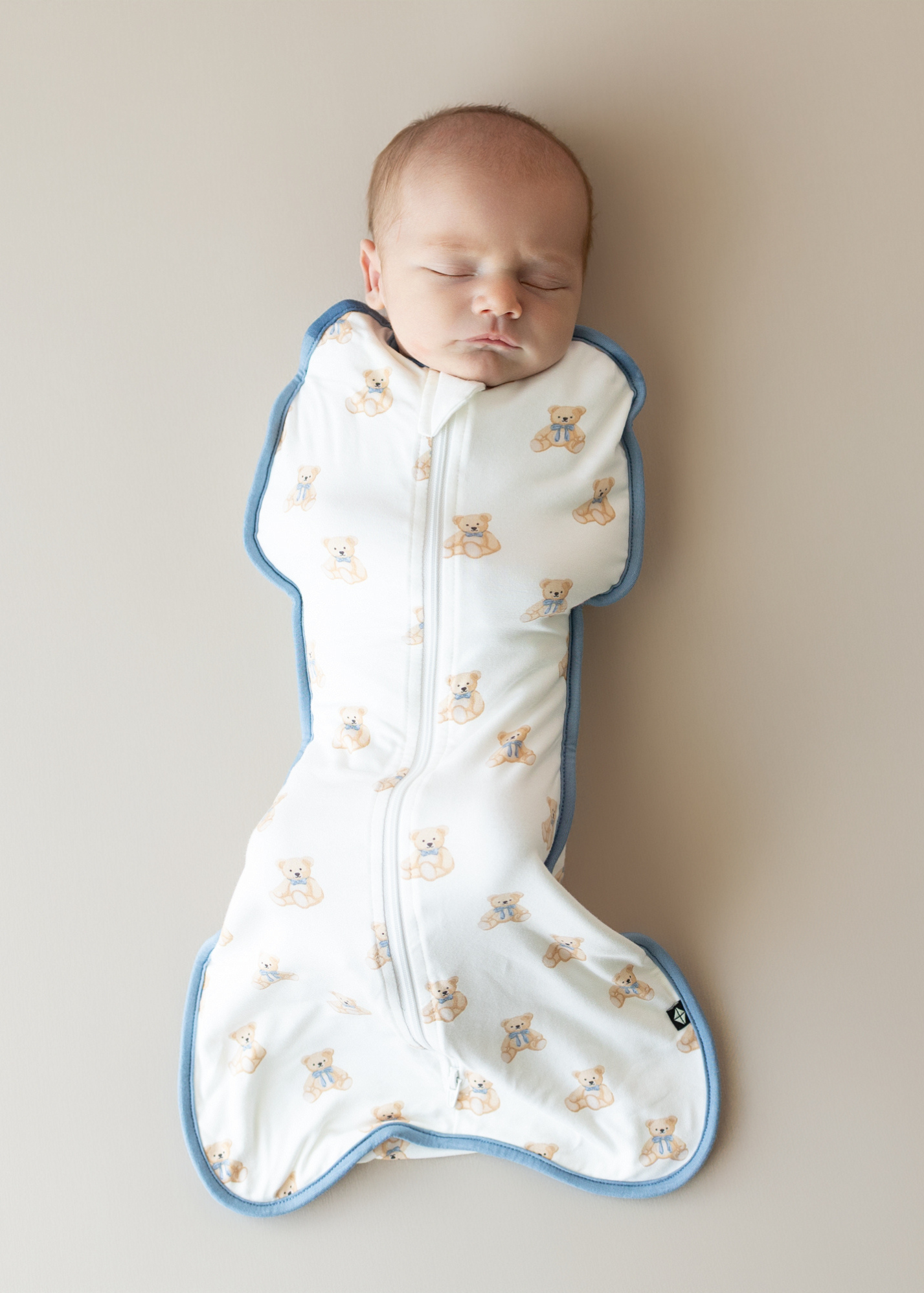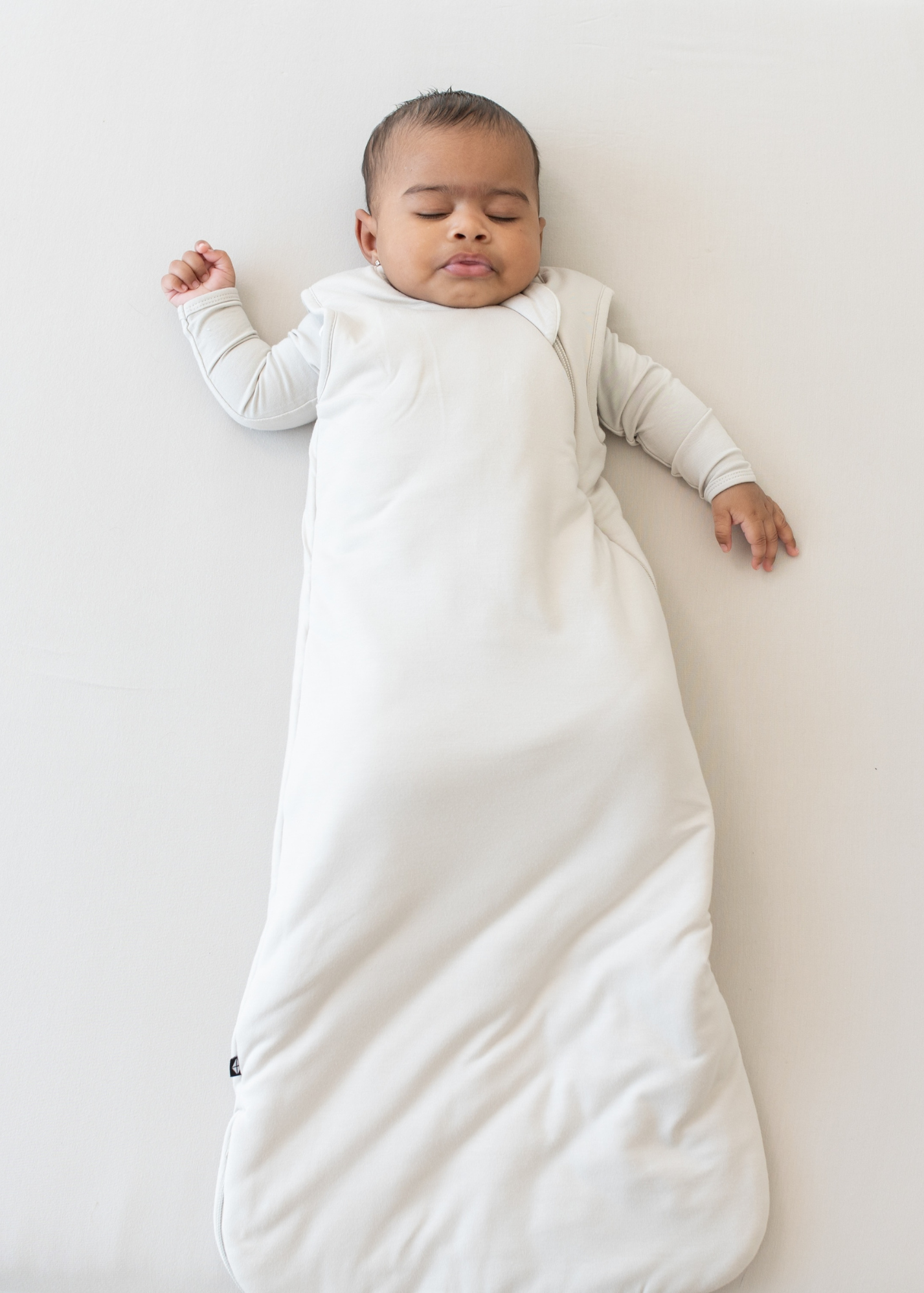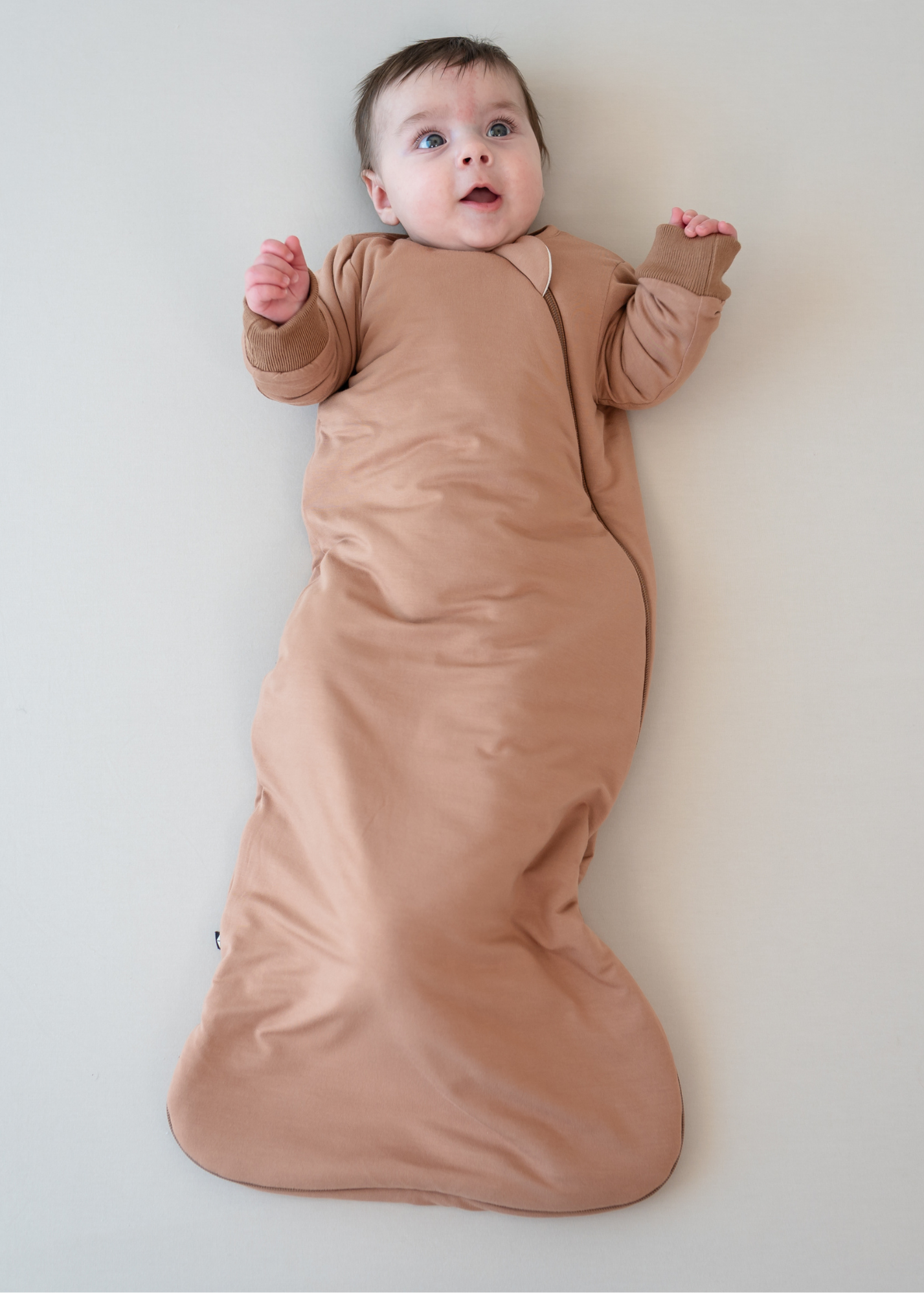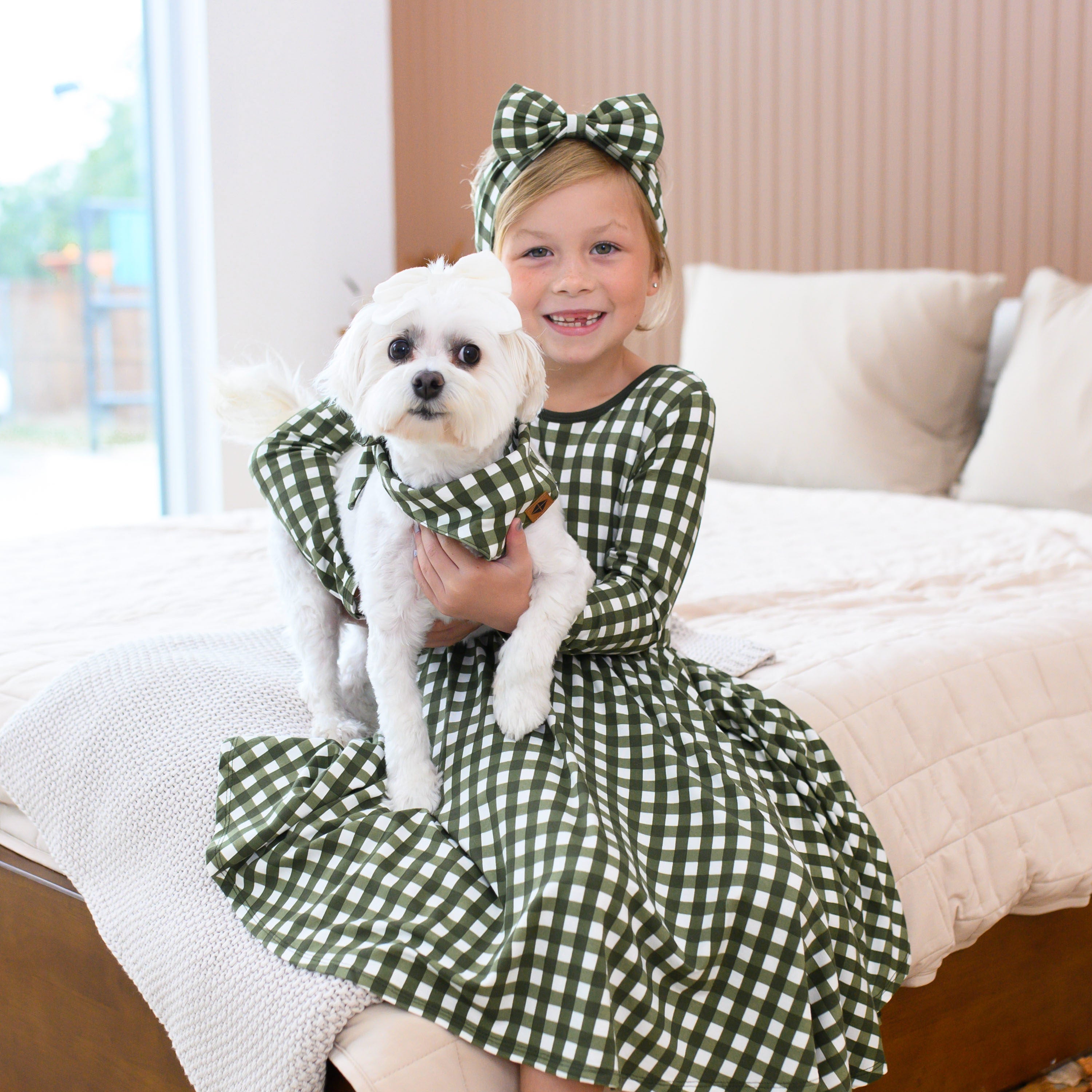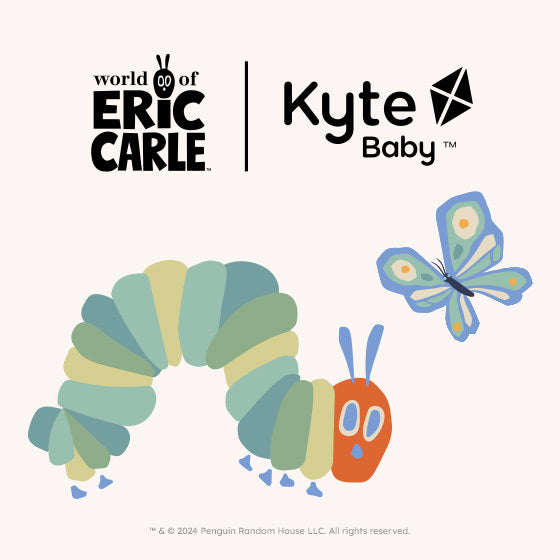Swaddling, an age-old technique for soothing a newborn, has origins dating as far back as early civilization. The reason it’s been around for as long as it has is simply because it works! Swaddling a baby involves tightly wrapping their body in a blanket so they can’t move their arms. Sounds simple enough, right? The theory behind its magical soothing abilities is that it calms babies by mimicking the environment of the womb. If you’ve never witnessed the magic of swaddling firsthand, you can think of it as being akin to sorcery. Newborns come into the world crying and they do a lot more of it during the early weeks of life. At the hospital, a nurse will quickly and securely wrap your screaming newborn in a swaddle with the deftness of a seasoned Chipotle employee. The results are instantaneous. The wailing ends and your newborn will calmly blink up at the ceiling or drift off to sleep. It is truly something to behold. No wonder the practice has survived for centuries!
However, like all things related to babies, it comes with its own fair share of controversy. In recent years, some have debated whether or not swaddling should be advised because of the risk of hip problems that occur when a baby is swaddled too tightly around the legs. It is true that improper swaddling can lead to developmental dysplasia of the hip or other risks for your baby, but the issue here is less about whether or not to swaddle, but more of how and when to swaddle. As long as you follow safe swaddling practices, swaddling can still be extremely beneficial for your baby during the fourth trimester.

WHAT IS HIP DYSPLASIA?
Hip dysplasia is a developmental or congenital abnormality in which the femur, the thigh bone, does not fit together with the pelvis as it should. Because the socket of the hip does not support the ball of the joint, it can lead to gradual misalignment or dislocation of the hip. The ball part of the joint may be partly or even completely out of the hip socket, and if left untreated, can lead to pain with walking or hip arthritis at an early age.
Because hip dysplasia does not cause pain in babies, it can be difficult for parents to notice. Although your child’s pediatrician will check to see your baby is developing properly, you can look for these signs and symptoms of developmental dysplasia as your child grows:
- A popping feeling or clicking sound of your baby’s hips
- Uneven length of your baby’s legs
- One hip moving differently than the other
- The skin folds under your baby’s bottom and thighs don’t line up
- Your child has a limp when starting to walk
If you observe any of these signs of abnormality in your baby, consult your child’s pediatrician to have their hips checked. While hip dysplasia cannot always be prevented 100%, you can make sure to always swaddle and wear your baby in the proper way to allow for normal hip development and prevent or reduce the risks.

SAFE SWADDLING PRACTICES
When in the womb, your baby is in the fetal position with their legs bent up and crossed over each other. According to the International Hip Dysplasia Institute, “the sudden straightening of the legs to a standing position can loosen the joints and damage the soft cartilage of the socket.” When swaddling your baby, you want to wrap the blanket snugly, but leave enough room in the legs to bend up and out at the hips. Your baby’s legs should not be tightly wrapped straight down and pressed together. It is very important to leave space for the hips to move.
When choosing a swaddle, you’ll find that there are many products out there on the market. Some may have zippers, some may have Velcro, some may allow arms up, and some look just like mini straitjackets. All commercial products for swaddling should have a loose pouch around the legs and feet for hip movement. However, even these products can be used improperly if tightened too much around the legs. Despite there being so many options for quick and easy swaddling, you may find an old-fashioned swaddling blanket does the trick best (although it may come with a learning curve). If you choose to use a blanket to swaddle your little one, you can follow this hip-healthy method:
- If using a square cloth, fold one corner over to create a straight edge.
- Place the baby on the cloth so that the top, flat edge is at baby’s shoulder level.
- Bring baby’s left arm down and wrap the cloth over the arm and chest. Tuck under baby’s right side.
- Bring the right arm down and wrap that side of the cloth over baby’s arm and chest.
- Tuck the cloth under baby’s left side, using baby’s weight to keep it in place.
- Fold, tuck, or knot the bottom end of the cloth, ensuring that both of baby’s legs are bent up and out in a frog position.

Another safe swaddling practice to follow is to always place your swaddled baby on their back. Newborns can have trouble sleeping on their backs because the position can trigger their startle reflex. Being swaddled helps them fall asleep faster and stay asleep longer because the snug wrap prevents them from startling awake. Being put to sleep on their back greatly reduces the risk of Sudden Infant Death Syndrome (SIDS), so swaddling can be a great asset here for those babies who flail every time they’re placed on their backs. However, a study published in the journal Pediatrics found that when swaddled babies were put to sleep on their sides or bellies, their risk of SIDS actually went up. If you’re a fan of swaddling your baby, there’s no need to abandon the practice because of this frightening statistic. Rather, continue to always place your swaddled baby on their back and never on their side or belly.
WHEN TO STOP SWADDLING
Because all good things must come to an end, there comes a time when you should no longer swaddle your baby. We know, we know. It can be hard to let go of the thing that’s helped both your baby and you get more sleep. But, let go you must! Although there isn’t an exact age that experts say you have to stop swaddling, a rule of thumb to follow is to ditch the swaddle as soon as your baby can roll over (or begins to attempt it). As your little one gets more mobile, the swaddle becomes more of a danger than an asset. Remember how we mentioned that the risk of SIDS went up for swaddled babies put on their side or stomach? A swaddled baby placed on their back is safest when they can stay on their back. Although some babies roll over at 3 or 4 months, others can do it at 2 months, so it’s best to err on the side of caution and bid farewell to the swaddle by 8 weeks of age. For more information on when to stop swaddling, you can read our blog post about it here.
Although the swaddle is no longer an option for safe sleep, you can transition your little one into a sleep bag, which can offer much comfort for babies. Since loose blankets are a SIDS risk before your baby is 12 months of age, a wearable blanket like a sleep sack is the ideal next step. Sleep sacks are wider and long at the bottom because, like swaddles, they should allow leg movement and hip flexion for proper development.
Now that we’ve covered the basic practices of hip-healthy and safe swaddling, you’re equipped with the knowledge that swaddling is and can be safe. It’s important to once again note that hip dysplasia is not always 100% preventable. The exact cause or causes of hip dysplasia are not known, but it is widely accepted that it develops around the time of birth, when the hip socket is more shallow than before or after birth. Though not an exact cause, genetics play a role in whether or not an infant is prone to hip dysplasia. Infant positioning during the first year of life also plays a role, which is why you always want to practice hip-healthy swaddling. If your little one is diagnosed with hip dysplasia, it’s just as important not to blame yourself. Because it is not 100% preventable, all you can do is follow safe practices and do your best to facilitate proper hip development in your baby.




